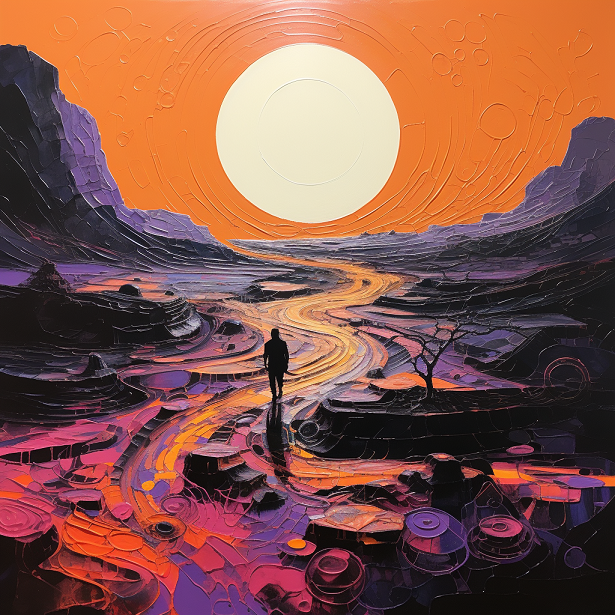Exploring the uncharted territories of Central Arabia has been a historical undertaking that has captured the imaginations of daring adventurers, only some of whom have left detailed accounts of their accomplishments. This essay delves into the journeys of two European explorers, Carlo Guarmani and Charles Montague Doughty, who traversed the formidable Nafud desert to unravel the mysteries of Jabal Shammar. These journeys, both unique and consequential, offer profound insights into the geography, culture, and challenges faced by those who ventured into the heart of the Arabian desert. As we embark on this historical expedition through the experiences of Guarmani and Doughty, we unravel a narrative that goes beyond the ordinary and ventures into the extraordinary realms of Arabian exploration.
Carlo Guarmani’s Strategic Mission
Carlo Guarmani, a Levantine Italian with a background as the consular agent for the King of Prussia at Jerusalem, embarked on a remarkable expedition through the daunting Nafud desert. His journey, distinct and purposeful, found its roots in a summons to Paris and a subsequent mandate to Turin. In September 1863, Guarmani, known for his ability to assume disguises in Arab lands, set out on a mission to purchase stallions in Nejd for the French and Sardinian majesties.
Guarmani’s successful navigation through the territories was facilitated by his intimate relations with the Anezi Bedawins, especially the Rowaila chief. Posing as Khalil Agha and claiming to be the Master of the Horse to Fuad Pasha, the Governor of Damascus, Guarmani avoided suspicion in the often hostile Nejd territories. His success in obtaining horses and comprehensive observations, particularly in Kheibar, enhanced our understanding of Jabal Shammar’s geography.
Charles Montague Doughty’s Archaeological Curiosity
In the annals of Central Arabian exploration, Charles Montague Doughty’s journey stands as a testament to both audacity and meticulous observation. Doughty, an Englishman of considerable intellect, embarked on his expedition inspired by tales of the ancient monuments of Medayin Salih, some three hundred miles beyond the Pilgrim Road.
Unlike Guarmani, Doughty’s journey was characterised by a blend of archaeological curiosity and a desire to intimately understand Bedouin society. His venture began with a covert arrival at Medayin Salih, living among pilgrims and Bedouins. Doughty’s recognition by the local pasha and commendation to the Moorish captain marked the initiation of his extensive exploration, extending as far as the palm oasis of el-Ala.
Challenges and Contributions
His journey took him through Teima, Hail, and eventually to Kheibar, a region previously visited by Guarmani. Doughty’s experience, however, was marked by challenges, including expulsion from Hail due to fears for public peace. Undeterred, he pressed on, enduring hardships and gaining support in Aneiza. The narratives of Doughty’s expedition go beyond the conventional exploration of towns, providing an unmatched depth of understanding into Bedouin life.
Doughty, driven by a fever for further discovery, painted a vivid picture of Central Arabia, capturing not only the hardships of Bedouin life but also the intricacies of oasis towns. His contributions to the understanding of hydrography offered an immersive portrayal of Bedouin life.
Journeys & Motivations
A meticulous examination of Guarmani’s and Doughty’s expeditions reveals distinct approaches to Central Arabian exploration, each contributing unique perspectives to the broader narrative. Guarmani’s strategic endeavours and Doughty’s multidimensional approach, though different in focus, collectively enhanced our comprehension of this historically rich and enigmatic region.
Despite the differences in their motivations and approaches, both Guarmani and Doughty left indelible marks on Central Arabian exploration. Guarmani’s itineraries and route maps supplemented existing accounts, providing valuable information beyond the capital and townsfolk. Doughty, on the other hand, contributed to the understanding of Arabian society and offered an immersive portrayal of Bedouin life.

Conclusion
In conclusion, the journeys of Carlo Guarmani and Charles Montague Doughty stand as pivotal chapters in the exploration of Central Arabia. Their ventures into the heart of the Arabian desert, marked by distinct motivations and approaches, offer a comprehensive understanding of Jabal Shammar and the broader Nejd region. Guarmani’s strategic mission and detailed observations, coupled with Doughty’s archaeological curiosity and immersive exploration, present a nuanced narrative that goes beyond the shifting sands of conventional exploration. The legacies of Guarmani and Doughty endure as valuable contributions to the annals of Central Arabian exploration, providing a lasting testament to the audacity and intellectual curiosity of those who dared to tread the uncharted paths of history.

